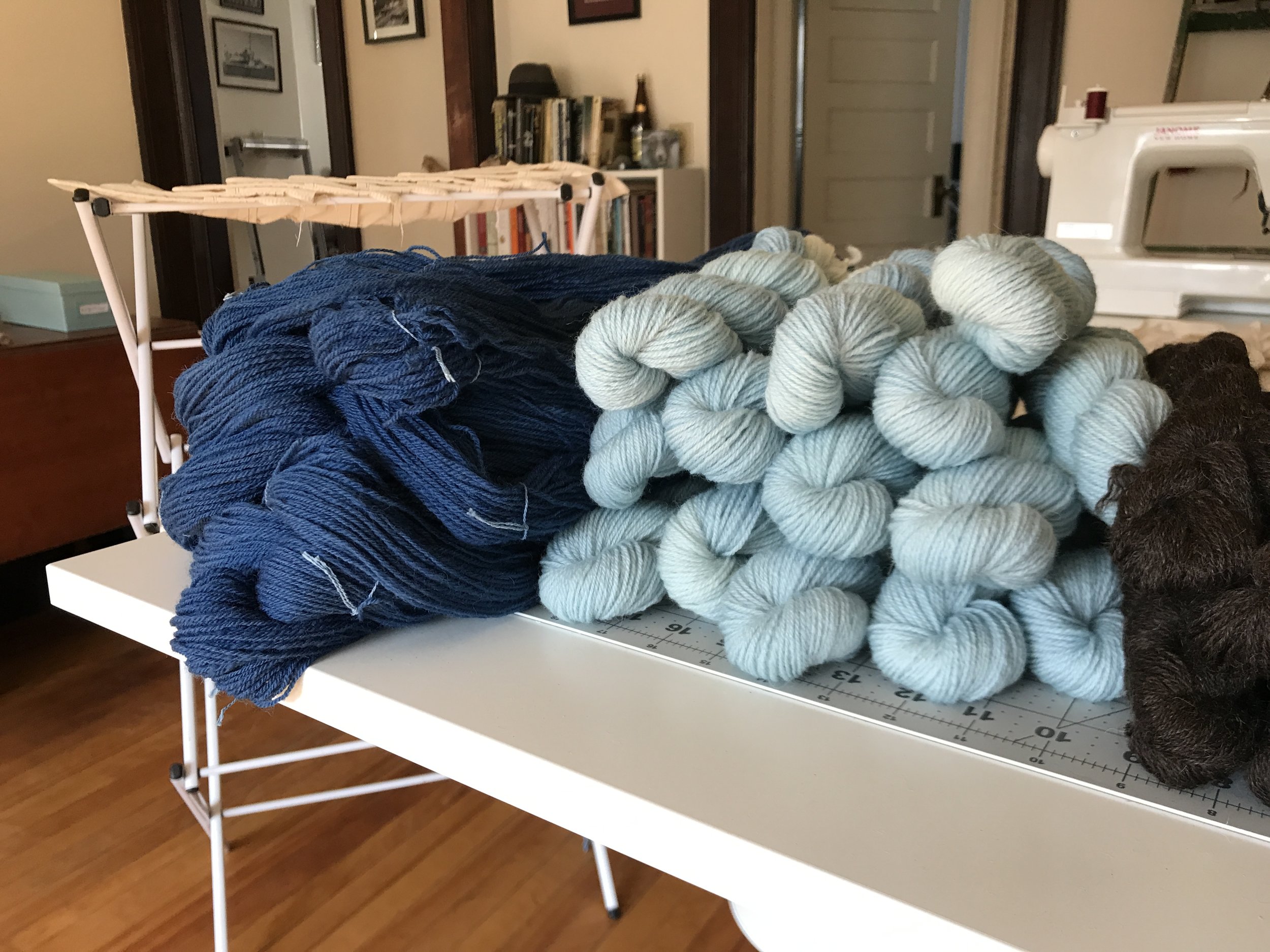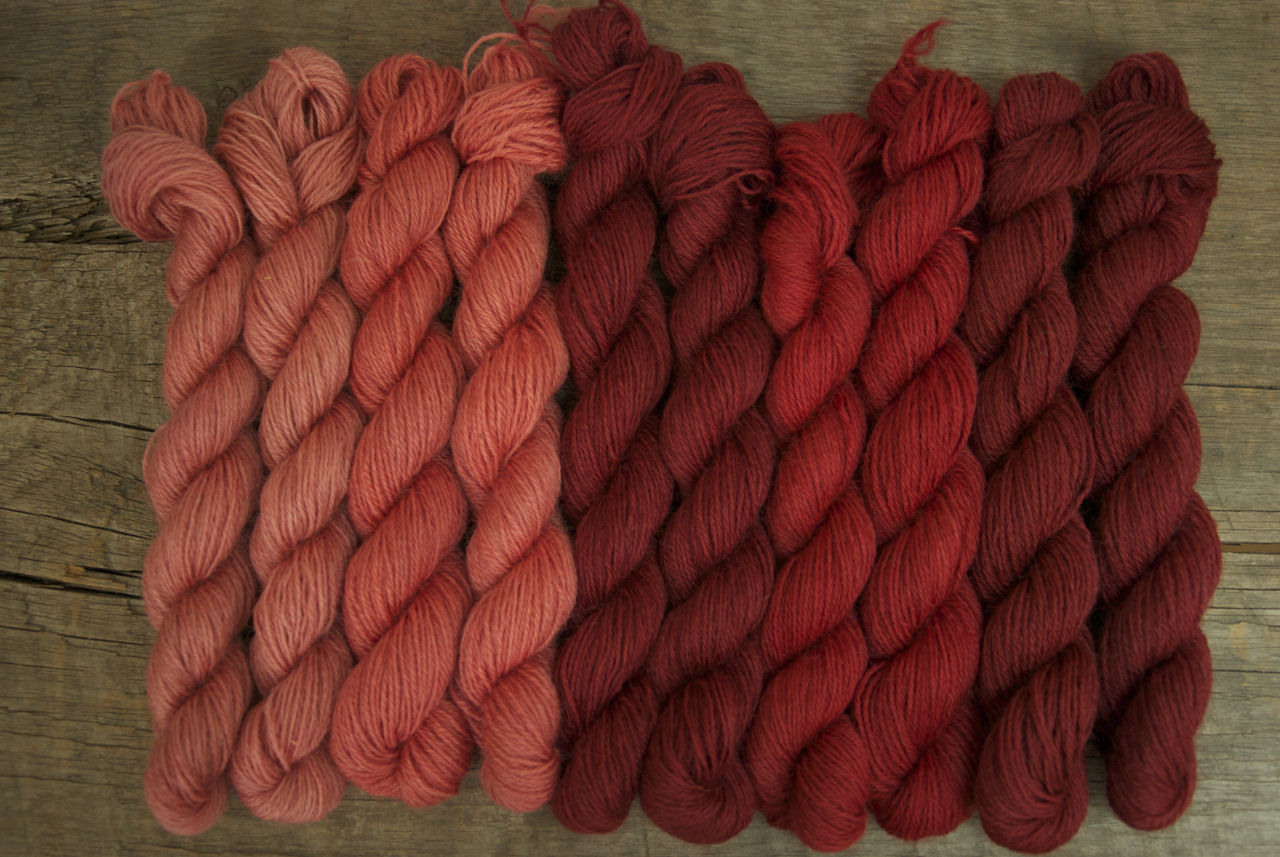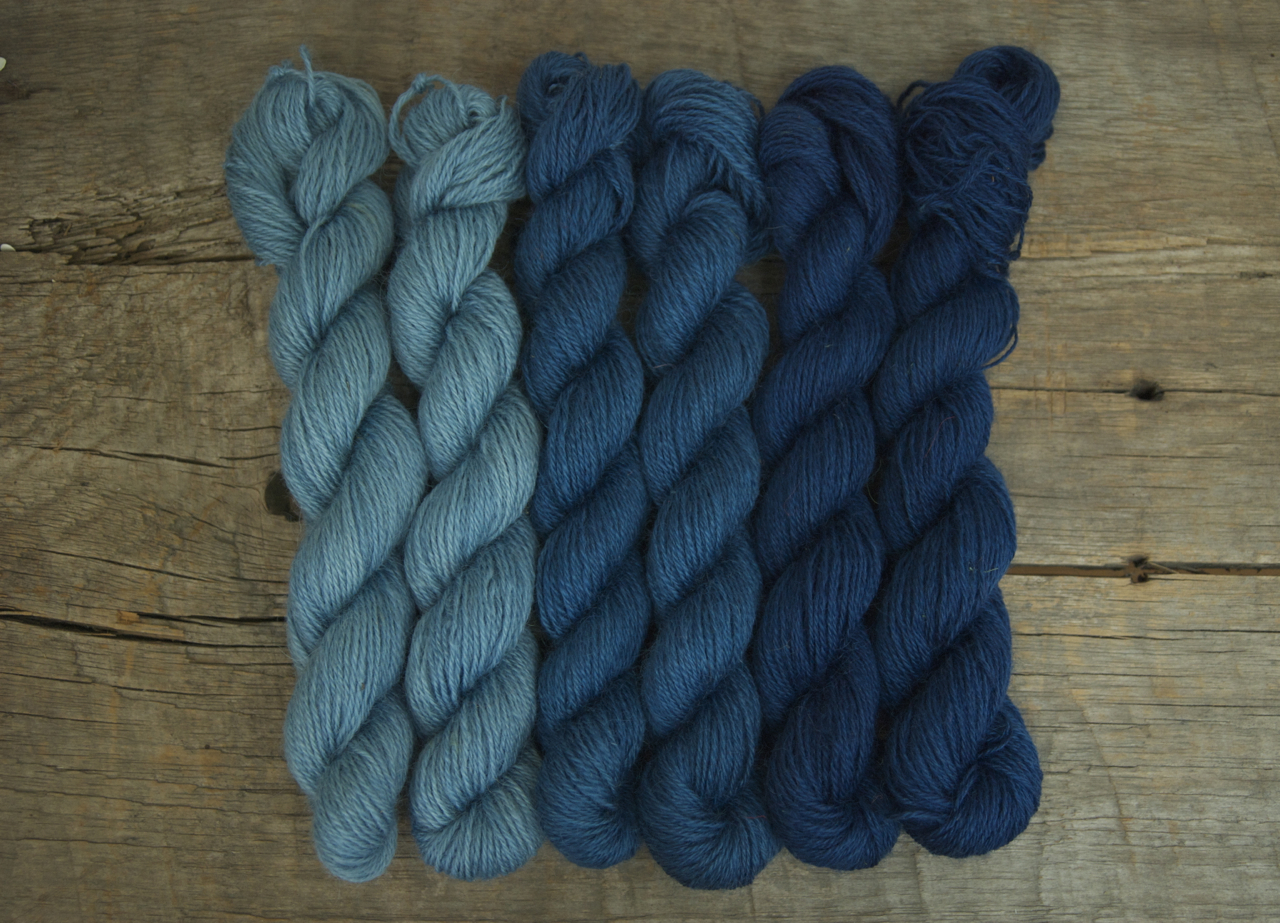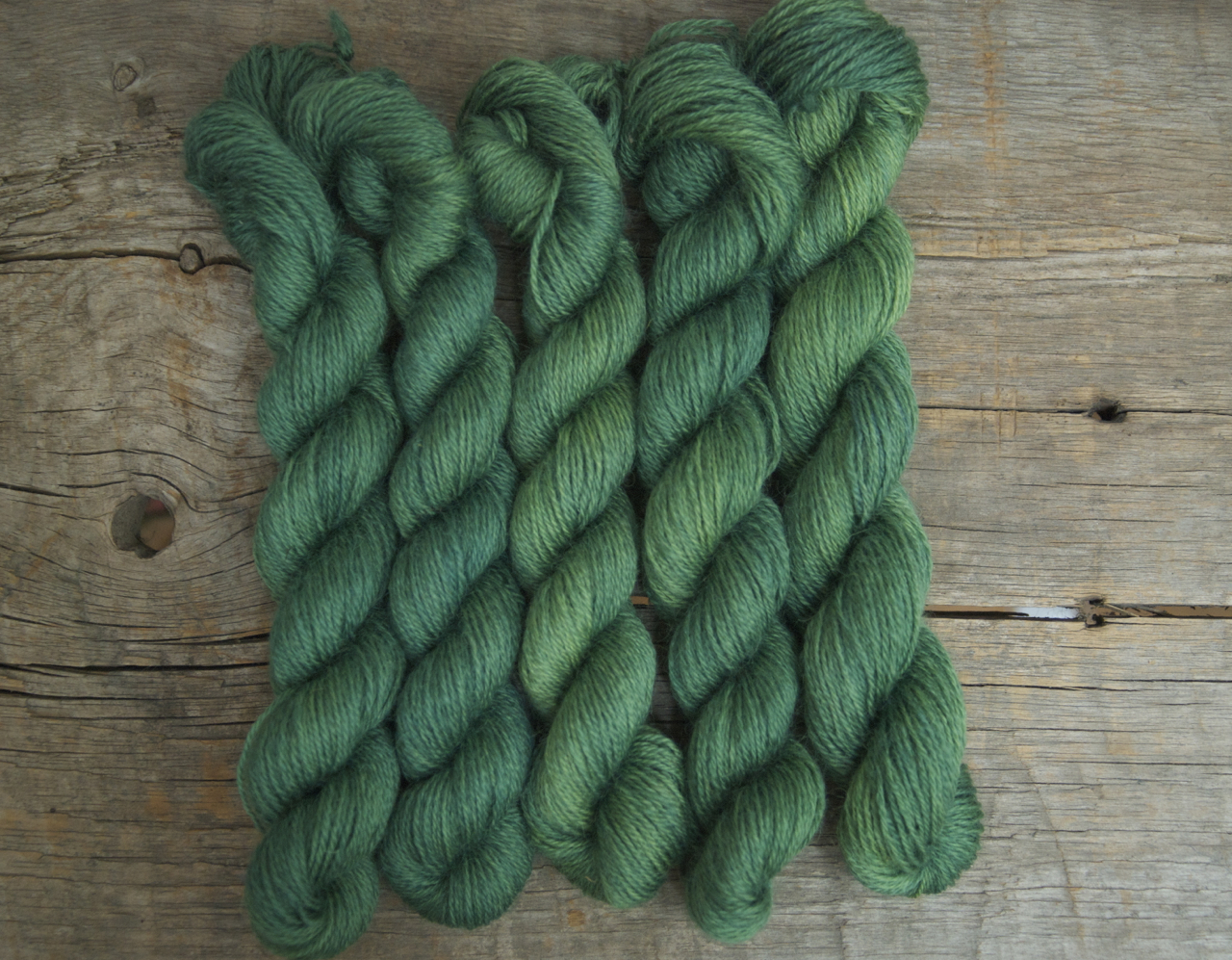Sometimes things that seem like mistakes actually just give you permission to play.
This Cotswold yarn was meant to be perfectly smooth, perfectly tensioned, perfectly plied yarn for knitting Sanquhar gloves. Instead, the moment I dunked it into its post skeining bath, it twisted and shrank as slightly incorrect tension reasserted itself. Little loops appeared at unpredictable intervals. Everyone has an off day, and this yarn appeared to have been the result.
Luckily this was a small run of yarn, and I had sent of a run of experimental Scottish Blackface x BFL that came back perfect (find this yarn in kits put together by Beth Brown Reinsel here) so not much was lost.
And once the pressure of needing to meet someone else’s needs was lifted (Beth had been waiting patiently for more Sanquhar yarn for longer than I care to admit) I could admit that I really liked this yarn in all of it’s wonkiness.
As a knitter I tend to think of function first. However intricate the knitting, I want to produce garments that I never have to think twice about wearing in an engine room, or on the deck of a schooner or (more realistically these days) wearing on long walks in the woods, or around the farm on sheering days, and these kinds of garments start with solid yarn. And now, instead of the solid yarn I was expecting, I have slightly airy, whimsical yarn.
So I decided to play.
I wound off large skeins, and worked out how to dye a variegated melding of blues into greens.
I absurdly pleased with the result.
I sold through most of the original dye lot at the New England Farm & Fiber Marketplace, but more is in the making (and I’m plotting more color ways). Watch this space.
April 2019: A few skeins are now listed on the page for my fingering weight yarns (scroll to the bottom) or here.




























